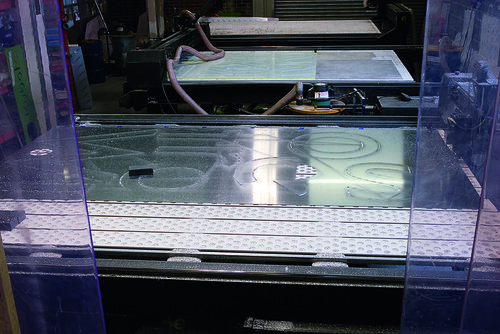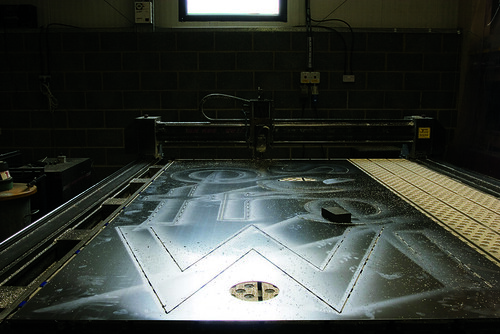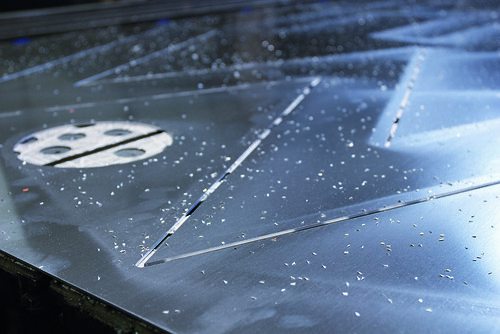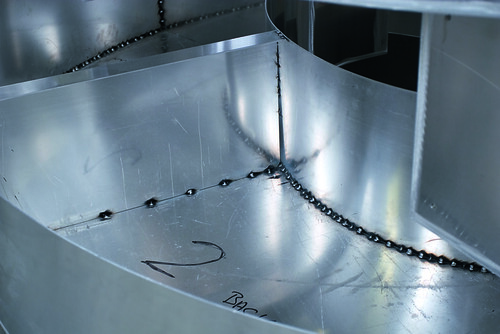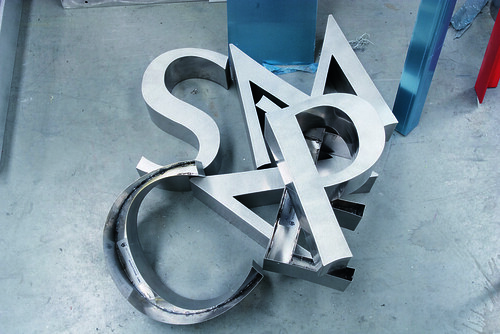Thursday, 10:55am
8 December 2011
Metal on metal
Andrew Haslam on the way store lettering is ‘routed’ for public display
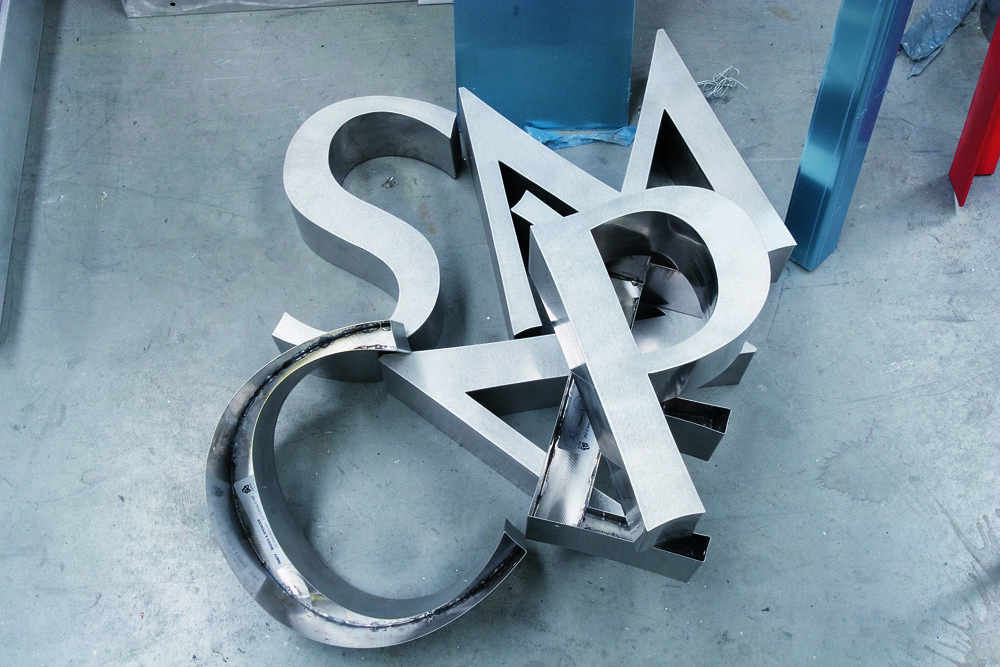
Profile-cut letters for public signage are usually ‘routed’ by machine, from a cutting guide based on digital keyline drawings of the letter shapes, writes Andrew Haslam.
A spinning blade, called a ‘routing bit’, is positioned over a sheet – typically made of metal, wood, acrylic, plastic or nylon – which it cuts to the required shape. The process is fully automated. This extract from Haslam’s article ‘Physical display’ (Eye 67) shows the making of a Marks & Spencer shopfront sign by Active Signs.
1. Digital keyline drawings of each letter are positioned individually rather than as words to make the most economical use of material. The keyline forms a cutting guide for the router. The operator positions the bit over the ‘origin point’ from which it begins to cut the sheet. The computer controls cutting speed and the path between the letters, raising and gently lowering the bit above the cutting surface as necessary. The operator is just above the routing tables, behind a safety curtain that shields them from the metal swarf thrown up by the router bit.
2. The operator stops routing and draws the curtain aside to examine the result. One person can oversee several router beds running at once, in this case three: one cutting stainless steel (foreground) and two cutting Perspex.
3. The largest sheet that can be cut on this bed is 3000mm x 2000mm but here a slightly narrower 1500mm sheet has been routed. The ‘W’ is 1250mm wide.
4. This detail shows a clean 4mm wide cut made in the 2.5mm deep stainless steel. Note the point of the ‘W’ (bottom left): although the router cuts in a circular fashion (see the rounded outer corner), a perfect point has been achieved on the inner edge.
5. Large routed letters can be fabricated into three-dimensional forms for wall-mounting. Here a support has been spot-welded to the reverse of the letter, and a strip giving the letter depth is attached with a welded seam.
6. The front face and seams of the welded letter are cleaned off with a sanding disc.
7. A boss, hexagonal nut with an internal screw thread is welded to the reverse of the letter to enable wall mounting.
8. A stack of stainless steel letters (cap height 800mm) awaits painting.
‘Physical Display’ by Andrew Haslam was originally published in Eye 67, Spring 2008.
Eye is the world’s most beautiful and collectable graphic design journal, published quarterly for professional designers, students and anyone interested in critical, informed writing about graphic design and visual culture. It’s available from all good design bookshops and online at the Eye shop, where you can buy subscriptions, back issues and single copies of the latest issue. The latest issue, Eye 81, has the theme of ‘Designers and clients’.


